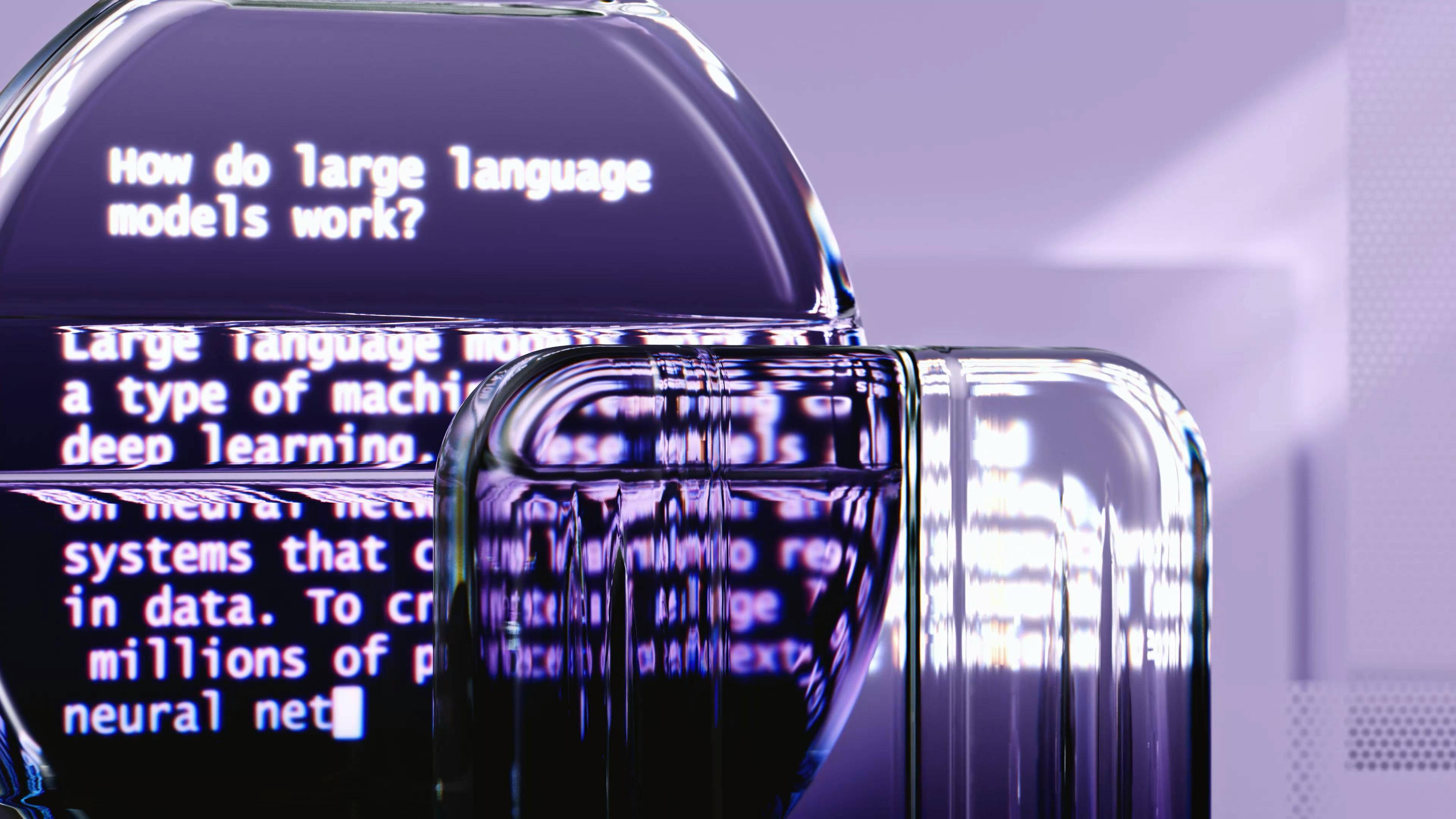Learn how Retrieval Augmented Generation (RAG) enhances AI search engines, improving precision and automating tasks for efficient information processing.
In recent months, significant advancements have been made in the development of large language models (LLMs), substantially improving the accuracy and reliability of generative AI (GenAI) applications.
Particularly, Retrieval-Augmented Generation (RAG) techniques have taken natural language processing (NLP) to a new level, transforming how we search and interact with online information and enabling the creation of new intelligent RAG search engines.
These recent advancements in artificial intelligence have led to the emergence of Retrieval Augmented Generation (RAG), a technique that further enhances large language models (LLMs) and their ability to process and retrieve information through natural language processing (NLP).
Discover how Bismart developed an intelligent RAG search engine that automates the reading of notifications, synthesizes documents, and enables natural language searches, triggering automated actions based on the results. Download the full success story for more details.
Case Study: RAG Search Engine
Discover how we developed a smart RAG search engine that automates natural language documentation.
RAG and AI Search Engines
Retrieval Augmented Generation (RAG) is not only driving the evolution of generative AI, but it’s also being applied in search engines, paving the way for the development of intelligent RAG search engines.
At Bismart, as experts in business consulting and artificial intelligence—and one of the few companies to have achieved the highest level of Microsoft certification in AI and data analytics—we are already working with RAG techniques. We have begun developing RAG-based projects to help our clients process natural language with the highest levels of precision and capability.
Before diving deeper into the subject, it’s important to understand what Retrieval Augmented Generation (RAG) is and how it works.
What are RAG Techniques?
Retrieval-Augmented Generation (RAG) is an innovative AI technique that integrates large language models (LLMs) with natural language processing (NLP).
RAG enhances the capabilities of LLMs by allowing them to retrieve and process up-to-date information from external databases, complementing the natural language generation capabilities of generative AI.
The key advantage of RAG techniques is that, rather than relying solely on the information the LLM was trained on, RAG can pull updated or specific data from external or proprietary sources. The retrieval model finds relevant data, while the LLM transforms it into coherent, context-rich responses.
RAG employs both semantic search and hybrid search to better understand user queries, delivering results that are more aligned with the context of the search.
This makes Retrieval Augmented Generation (RAG) an advanced solution that can optimize the precision of AI semantic search engines and enhance the quality of responses in generative AI applications.

In corporate environments, where internal data and sensitive documents are critical, RAG techniques enable AI-based semantic search engines to access both internal and external information based on the context of the query, providing a personalized, deeply contextual and relevant information search experience based on business needs.
By incorporating additional information sources, such as recent data or internal documents, RAG techniques dramatically improve the relevance and accuracy of answers, without the need to retrain the original LLM model.
What is a RAG Search Engine?
RAG techniques are particularly useful in AI semantic search engines. By incorporating RAG techniques into these natural language processing (NLP) search engines, highly advanced search tools are being developed that not only respond to direct user queries but also find related information through the use of generative AI.
RAG search engines stand out for their ability to interpret unstructured documents and records, such as those found in a hospital setting. For example, instead of simply looking for exact keyword matches, a semantic search engine can process clinical data and answer complex questions posed in any form, such as identifying the treatment assigned to patients with specific symptoms.
In other words, by integrating RAG techniques, a semantic search engine can not only provide exact answers but also identify patterns and relationships in the data, which can be invaluable for medical decision-making, improving both the efficiency and accuracy of information processing.
Types of Search Engines: From Basic Search to RAG-Powered Intelligent Search
To better understand the difference between a standard search engine and a RAG powered search engine, let's use the example of searching for the word 'fruit':
- Traditional search engine: It will find files with 'fruit' in their name, such as 'fruit.doc' or 'sweet_fruit.xls.'
- Advanced search engine: In addition to the files mentioned, it will also locate documents that contain the word 'fruit' within their content, such as 'document1.doc' or 'document2.xls' (where 'fruit' might appear in an Excel column title).
- RAG-powered search engine: This search engine goes a step further. It not only finds files with the word 'fruit' in their content but also understands context. For instance, if a document mentions 'bananas,' it recognizes them as fruit and includes them in the results. Additionally, if a file refers to 'fruit sellers' or 'farms,' it considers these relevant as well, understanding that these terms are related to the concept of fruit.
This type of semantic search engine, enhanced by RAG, has the ability to comprehend the meaning of documents on a much deeper level, delivering results that surpass the limitations of traditional text-based searches.ales.
Success Story: Developing a RAG-Powered Intelligent Search Engine
Automating Actions Based on Search Results
At Bismart, we always strive to stay at the forefront of the latest innovations in artificial intelligence. As one of the few companies with the highest certification level in AI, Bismart has already completed projects based on RAG techniques to develop intelligent search engines with advanced capabilities that go beyond traditional search methods.
Specifically, Bismart developed a RAG-powered intelligent search engine for a multinational in the legal sector. The goal of the project was to automate the management of judicial notifications, a process that previously required a significant amount of manual work.
By incorporating RAG techniques into the search engine, we were able to take AI semantic search a step further, achieving automation of actions based on the search results. This not only allowed our clients to save thousands of work hours previously spent on manual intervention but also optimized the efficiency of information processing.
Thanks to our solution, the company was able to fully automate the reading of these notifications, automatically identifying and extracting key data. This resulted in significant savings in time and resources, allowing employees to focus on strategic tasks while the system handled the processing and structuring of the information.
In this way, our RAG powered search engines not only find relevant information but also trigger automated processes that streamline and simplify operations for our clients.
If you'd like to see how we developed a RAG search engine capable of automating task generation from judicial notifications, download the full success story.
Case Study: RAG Search Engine
Discover how we developed a smart RAG search engine that automates natural language documentation.
RAG-Powered Intelligent Search Engine: The End of Google Search?
The advent of Retrieval Augmented Generation (RAG) marks a significant transformation in the world of search engines, with some suggesting it could signal 'the end of Google Search' as we know it.
For instance, OpenAI has announced plans to launch a RAG search engine that could revolutionize contextual searches, surpassing current tools like Google. In fact, more and more users are turning to models like ChatGPT for search tasks instead of relying on traditional search engines.
Microsoft is also working on integrating RAG into its products. Currently, SharePoint’s search engine allows users to search within document content, not just titles or file names. With the incorporation of RAG, they plan to take this functionality to the next level. Similarly, Bing’s search engine has already implemented some RAG features, making it a more advanced tool for document searches within organizations compared to traditional search engines.



